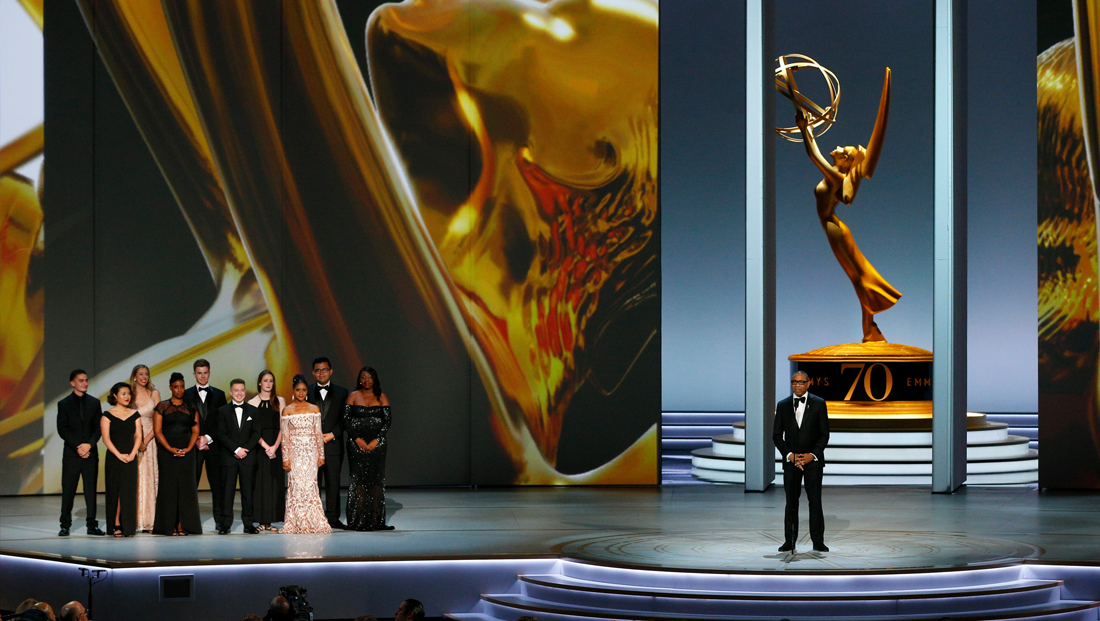Community, Leadership, Experimentation, Diversity, & Education
Pittsburgh Arts, Regional Theatre, New Work, Producing, Copyright, Labor Unions,
New Products, Coping Skills, J-O-Bs...
Theatre industry news, University & School of Drama Announcements, plus occasional course support for
Carnegie Mellon School of Drama Faculty, Staff, Students, and Alumni.
CMU School of Drama
Thursday, September 27, 2018
On center: How those pivoting panels at the Emmys were engineered
NewscastStudio: A key component of the 70th Annual Primetime Emmys telecast production design was a large, curved video wall divided into 14 tall vertical towers that could rotate on demand thanks to automation equipment and software from TAIT.
Subscribe to:
Post Comments (Atom)

3 comments:
To me, it seems like media design at CMU has kind of a bad rap. Maybe it's because the program is relatively new, or because there are few people involved, but I think that the general assumptions about media should be changed. It exists in a little bit of a grey area, stuck between traditional design and film, but that doesn't make it any less important to a show. Not only are major award shows relying on media design technology, but more and more concerts and traditional theatrical productions are turning to media design to diversify their shows. As a community, we are simultaneously willing to change but also strictly static in what we know works. We want new technology, but not if that technology is too different from what we know. It's about time that the entire industry caught up to what media can do, because incorporating more media into traditional shows could greatly benefit the production quality and the immersion of the show. Without those panels and the screens the show would not have been what it was.
Every time I see large-scale automation, I think of a similar situation that used manual control. These rotating panels remind me a bit of a show where we had a pair of differently-sized elliptical “pods” that rotated open or closed for various scenes. Each pod had an operator (I was on the SL pod), and part of tech involved setting speeds for various changes—which meant the stage manager told us a count for the movement, or just told us to whip it open or closed as quickly as we could without ejecting actors and furniture. However, because there were too many variables in the system, it was impossible to get perfectly consistent results. With automation as described in the article, we could have achieved consistency by removing the physical human element. Even so, a person would have needed to be present at each pod movement in order to ensure the safety of the actors. Adding automation to that particular system would have added cost without reducing personnel requirements.
While I did not get to watch the Emmys this year, it was really interesting to read about the set and how it was engineered. It is to no surprise that these panels were built and conceived by TAIT Towers. To put it lightly, TAIT Towers is absolutely the best in the automation world. I had the wonderful opportunity of working with some of the guys at TAIT Towers last year at their Las Vegas office through the USITT Elite Training Program. There we learned all about Navigator, their proprietary automation control software. In the end, we used various rigging techniques combined with automated winches and Navigator to create automated bowling. What is the most impressive to me is that Navigator was able to track the positions of the panels at all time and give this information to the media department so they could track the movement with their projectors. Can’t wait to see what TAIT will do next.
Post a Comment